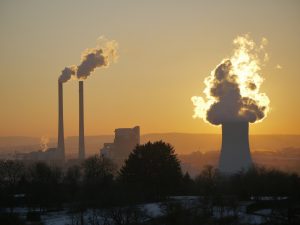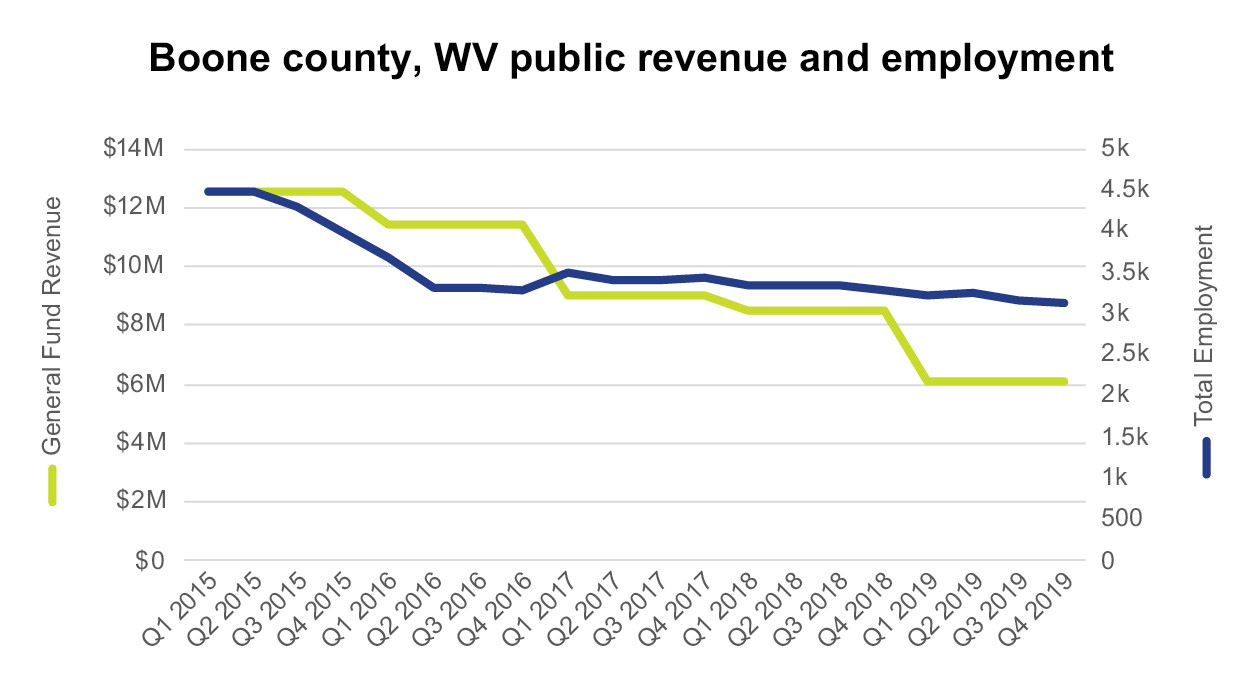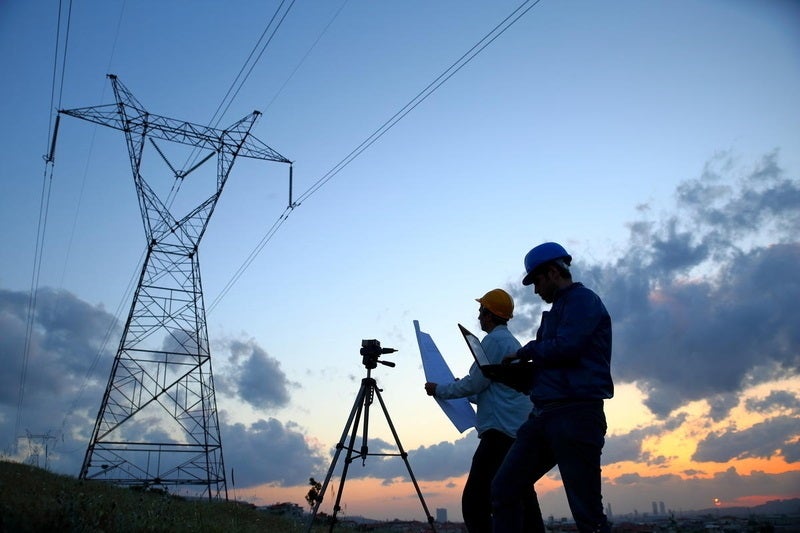
New report: How economic development policies can support fossil fuel communities in the move to a clean economy
This first report in a new joint research series by Environmental Defense Fund and Resources for the Future examines US federal economic development programs and policies that can revitalize communities that have been historically reliant on fossil fuels. Daniel Raimi, Wesley Look, Molly Robertson of RFF and Jake Higdon of EDF contributed to the report described in this blog post.
For a long time, Boone County, West Virginia was a vibrant coal community at the center of Appalachia, ranked consistently as the top county for coal production in the state. At one point, the county was able to capitalize on a surplus of revenue, derived largely from the state’s coal severance tax, to fund new sports fields and judicial buildings. But the decline in US coal production over the last decade, driven by increasingly competitive energy alternatives, including wind and solar, led to mine closures in West Virginia — and an exodus of coal workers and their families. Boone County’s budget diminished along with the closures: Its General Fund Revenue fell by half in the last five years.
In 2019, local officials faced a $2.5 million budget shortfall, forcing them to make difficult cuts to essential community services.
The surrounding communities reliant on coal as an economic driver, including the families of workers, local business owners, teachers, nurses, and more, have struggled to find new opportunities in the wake of its downfall. The effects of the COVID-19 pandemic have exacerbated this trend in the short term. And in the long run, the necessary move to a clean economy will not only disrupt coal communities, it will impact communities reliant on oil and gas and other industries reliant on fossil fuels. Economic development policies can be a lifeline for these communities, putting them on a path to diversify and revitalize local economies through public and private sector funding.
Our first report in this research series on fairness for fossil fuel workers and communities aims to give federal policymakers an understanding of the tools at their disposal to generate new economic opportunities in communities affected by transition to a clean economy. This entails examining both existing federal economic development programs and proposals. In our analysis, we divide economic development programs into those that explicitly target regions where natural resources (particularly fossil fuels) underpin the local economy, and those that have a broader geographic scope. We then categorize each set of programs into two types of intervention: capacity building and financial support. Capacity-building programs provide organizations with technical assistance, research support, and other skills that can help them implement successful local economic development programs. Financial support involves funding federal, state, and local programs, non-profits, and private entities through grants, loans, or other mechanisms.
Key insights
Our review of these programs, and our examination of the empirical literature on their effectiveness, yields five key insights into how federal economic development policy can be utilized to ensure a fair transition to a clean economy.
- First and foremost, we find that federal intervention can help support medium- and long-term economic development in numerous local contexts. The available empirical studies, while limited, show that both geographically targeted programs and those with a broad geographic and economic scope can lead to increased employment, greater business stability, and other local economic benefits.
- The existence of many federal, state, and local economic development programs means that any successful attempt to deliver fairness for workers and communities will require substantial coordination across governmental bodies and with local stakeholders. A lack of coordination across federal programs has been highlighted as a potential challenge by numerous researchers, and recent efforts have sought to better coordinate and streamline the array of existing federal economic development programs.
- Existing economic development programs can be augmented or redirected to support fossil fuel-dependent communities and workers, even if a given program was not originally designed for that purpose. Numerous programs examined in our report have offered support to communities facing economic challenges for over half a century or more. For instance, the POWER Initiative, which leverages an array of existing programs to deliver economic development and other programming in close partnership with energy communities, could be an important model for federal policy that invests in workers and jobs.
- Federal programs explicitly targeting economic development have limited funding, with just $80 million designated to support economic development in fossil energy communities. This level of spending would need to grow considerably to support the many workers and communities affected by the shift toward clean energy.
- Finally, because the transition to a clean energy economy will have geographically concentrated economic effects, policies supporting economic development in the most affected communities will most likely need to be geographically targeted. But policy design matters. Some geographically-targeted programs, such as Appalachian Regional Commission (ARC) grants, have seen success in delivering long-term income and employment growth in natural resource dependent communities. Others, such as the Secure Rural Schools program, have failed to support their intended beneficiaries (i.e., schools) and created planning challenges for local governments, businesses, and residents due to uncertain funding levels. Policymakers should design and implement geographically-targeted policies carefully and with these divergent experiences in mind.
What’s next?
Supporting economic development in fossil fuel dependent communities and regions comprises one category of solutions in the complex set of challenges associated with the transition to a clean economy. Over the next few months, we will publish more reports, blogs and materials in this series to address other key policy mechanisms that can support workers and communities in transition, including investments in environmental remediation, infrastructure, workforce development programs, labor standards, clean energy, and public benefits, such as unemployment compensation and public health care. EDF’s aim is to complement the work that groups like Just Transition Fund and BlueGreen Alliance have been leading in this space, by sharing useful insights on existing policies and programs designed to deliver on the promise of fairness for fossil fuel workers and communities.
Read the full economic development report here.
Learn more about this series here.













